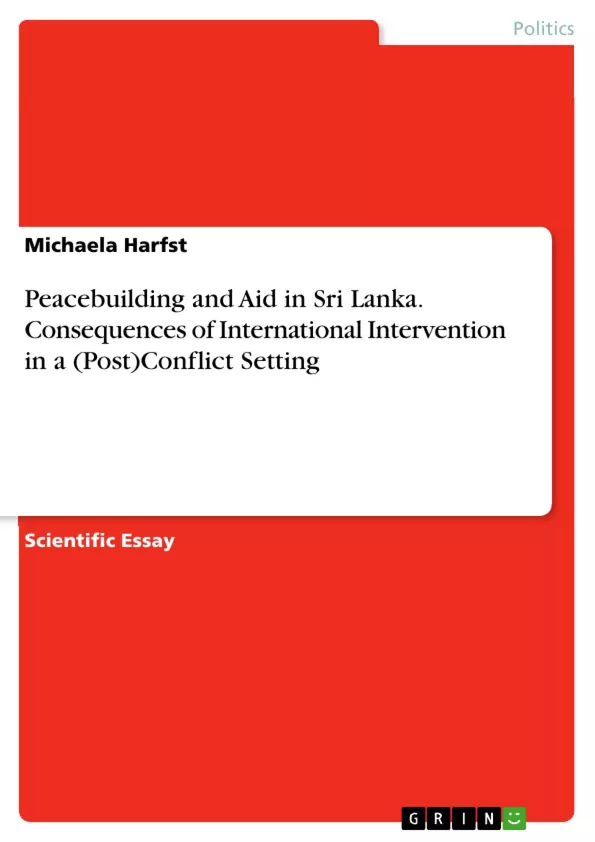A broad overview of the “internationalization” of peacebuilding in Sri Lanka is given in the beginning of this essay. An analysis of relevant actors and stakeholders is necessary to facilitate understanding of the international involvement while the Conflict Tree tool is used to visualize roots and effects of the difficult situation. Also the relevance of Track I and II approaches during the peacebuilding process and its effects on the conflict dynamics are discussed. Failures made by organizations during and after the Tsunami can be seen as the last straw to a non-reversible critical stance towards international engagement in Sri Lanka. Some of the main flaws will be discussed in detail, as well as organizational tactics to cope with the difficult situation caused by the flawed Tsunami aid response. As a conclusion, there will be a short needs analysis for changes in organizational practices.
Inhaltsverzeichnis (Table of Contents)
Zielsetzung und Themenschwerpunkte (Objectives and Key Themes)
This text aims to provide a comprehensive analysis of [briefly state the central subject of the text].
- [First Key Theme]
- [Second Key Theme]
- [Third Key Theme]
- [Fourth Key Theme]
- [Fifth Key Theme]
Zusammenfassung der Kapitel (Chapter Summaries)
Chapter 1:
[Summary of Chapter 1]
Chapter 2:
[Summary of Chapter 2]
Chapter 3:
[Summary of Chapter 3]
Chapter 4:
[Summary of Chapter 4]
Chapter 5:
[Summary of Chapter 5]
Schlüsselwörter (Keywords)
[Brief paragraph encapsulating the main keywords and focus topics of the text, such as research focuses, important themes, and core concepts.]
- Arbeit zitieren
- B.A. Michaela Harfst (Autor:in), 2013, Peacebuilding and Aid in Sri Lanka. Consequences of International Intervention in a (Post)Conflict Setting, München, GRIN Verlag, https://www.grin.com/document/215758



